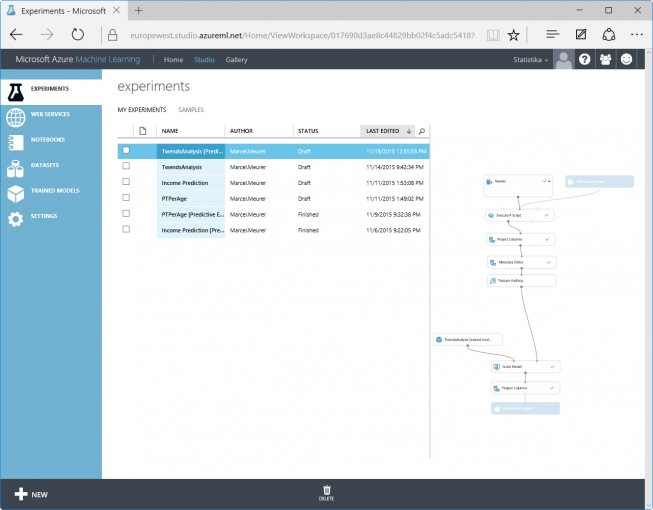
- #Azure data studio filter tables install#
- #Azure data studio filter tables code#
- #Azure data studio filter tables password#
OUTCOME #4: This query that joins two tables should return three rows, in no particular order.

OUTCOME #3: This query on a view should return eight rows, in no particular order (note that the column names are sequenced based on the order defined in the table versus the sequence we specified in previous queries).ĭML Task #4 -DML TASK #4: Query the Address and CustomerAddress tables to return CustomerID, City, and StateProvince, where the address is located in Idaho.

OUTCOME #2: This query on a view should return 37 rows, ordered by the parent category, then product category.ĭML Task #3 -DML TASK #3: Query a view called vGetAllCategories, returning all columns, where the ParentProductCategoryName is Clothing, in no particular order. OUTCOME #1: This query on a view (rather than a table, just for fun) should return 37 rows, in no particular order.ĭML Task #2 -DML TASK #2: Query a view called vGetAllCategories, returning the product category, the category ID, and then the parent product category, ordered by the parent product category, then product category. The -OUTCOME will provide information on the expected results.ĭML Task #1 -DML TASK #1: Query a view called vGetAllCategories, returning the product category, the category ID, and then the parent product category, in no particular order.
#Azure data studio filter tables code#
Enter your code before the -OUTCOME comment in each task. You do not have to remove these comments before you run a query. Note that the following tasks include hints that are commented out (preceded by two dashes like this: -THIS IS A COMMENT) and can be safely copied to the Query Editor window to help you study the code, understand what it is doing, and verify the executed results. If you are new to SQL, refer to the Lab Guide for the code solutions, which you can copy-paste into the Query Editor. If you are experienced in writing at least some SQL, we encourage you to use the hints provided below to construct each query. At the top of the pane, ensure it is connected to the SQL_Lab to indicate the database you are using. In Azure Data Studio, open the Query Editor. Use the previously copied FQDN as the Server, LabAdmin as the User name, and Lab!Pwd9 as the Password. Once the account is linked, connect to the server and database in Azure Data Studio.

In Azure Data Studio, add a new linked Azure account using the same credentials you used to log in to the Azure portal. Connect to Azure Subscription and Database from Azure Data Studioįrom the Azure portal Overview page, obtain the Server name (FQDN).
#Azure data studio filter tables password#
Use Lab!Pwd9 as the password when connecting to the Query editor. This is true, regardless of whether you choose to use Azure Data Studio or some other tool to perform the queries in the last objective of this lab.Ĭonfigure this access for the Azure SQL Database by adding your client IP the Networking page, where the IP firewall settings are managed. To connect to the database, the firewall needs to allow you access, which means you need to provide it with your current IP address. Enable Your Client IP Address on the Azure SQL Database
#Azure data studio filter tables install#
const results = tableClient.Successfully complete this lab by achieving the following learning objectives: Download and Install Azure Data Studioĭownload and install Azure Data Studio for your OS. Click image to enlarge.Ĭonst tableClient = azTableService.getTableClient('Student') Ĭonst results = tableClient.listEntities() Given the following data table structure and its entities. Select is use to choosing which piece of data (column/property) that will be returned, similar to select clause in TSQL. There are 2 important (optional) properties, filter and is use to exclude/include data based on criteria, similar to where clause in TSQL.

Querying Azure Data Table basically using Odata convention. This post will attempt to provide more extensive examples. This is official sample code from Microsoft: There are not many resources when it comes to querying Azure Storage’s Table.


 0 kommentar(er)
0 kommentar(er)
